
Kashmir Times Front Page Magazine – ‘Jashan-E- Faiz’/ By Rashmi Talwar on Jan-1-st 2012

Indo-Pak poetry flows under Faiz’s benevolent umbrella / By Rashmi Talwar
Published on Front page Magazine in Kashmir Times on January 1st 2012
“Jashan-e-Faiz” Centenary Celebration of Faiz Ahmed Faiz
Day –I
Indo-Pak poetry flows under Faiz’s benevolent umbrella
By Rashmi Talwar
Were I to compare, the Urdu-Punjabi poetry of Faiz Ahmed Faiz, one of the greatest poets of the subcontinent –it would be to a ‘Blue-Blooded Horse’. The poetry of Faiz possesses the free spirit, the depth –a hallmark of the Graceful Stallion, thus …:
Its star speckled forehead –-satire,
Its pointed-ears– perfectly attuned to the murmurs of meadows,
Its gait –- majestic, regal, undeterred,
Its upright flashy tail– of words whipped and blazing their own path,
Its spirit– mystifying and unshackled,
Its power- -untamed, gazelle-like,
Its energy– boundless, astir with rebellion,
Its fodder-graze– an outpouring emerging from hunger of untold human sufferings,
Its water–nectar- the unmatched adulation of those he took up for…
Its hoof-marks –inscribed in Mighty Earth for ever….
Then when they tried to tame, bound or incarcerate this spirited soul, he galloped free, emerging more powerful, fearless and unbridled, his poetic insignia shaping popular public imagination and infusing fear in Aakas of ill-gotten empires, self-declared Lords, assuming the role of God Almighty.
To the oppressor, Faiz addressed thus: ‘Qafas hai bas mein tumhaare, tumhaare bas mein nahin/ Chaman mein aatish-e-gul ke nikhaar ka mausam’ (‘To his captors, a garden-bird booms: A cage is all that you have in your power. But, nothing and no one possesses the power to keep the garden from blooming when the time comes for lush flowerings.’)
In the backdrop of the cascading umbrella of this mellifluous, lilting poetic rhythm of Faiz Ahmed Faiz, poets, artists transcended boundaries of oppressive borders of India and Pakistan to confluence at Zorawar Singh Auditorium of Jammu University, for the two-day Festival organized by Jammu Civil Society for Art and Literature (JCSAL) in collaboration with Indian Council for Cultural Relations (ICCR), for the ‘Jashan-e-Faiz’ –the 100th birth anniversary of one of the greatest poets of the sub-continent. This, in celebration of his free-soul, his haunting words, weaving the stark reality of upheavals, of pain, of human values combined with nature and its connotations, in its truest form.
The grand Fest opened by comperers of the evening essayed many couplets of Faiz, while the chief guest of the evening, Jammu and Kashmir, Chief Minister Omar Abdullah, sat enraptured after lighting the traditional lamp inaugurating the extravaganza.
As Faiz’s enormous and potent emotions of poetry combined and mingled with contemporary, original artistic structures of ghazal, dance, drama, the poetic symposium rekindled the bonds of a cohabitation torn apart, as Salima Hashmi, Faiz’s daughter, the guest of honor, sat moist-eyed watching the galaxy of Indian and Pakistani artists , poets who stood tall in their respective countries, churn out the best of original poetry covering aspects as banal as corruption and as soft as hands folded in prayer.
The stage came alive with Ustad Hamid Ali Khan, Pakistan’s finest exponents of classical singing and ghazal.
His vibrating, variegated pitch adding magic to the famous couplet ‘Laagi re, Tau Say Laagi…, najar sayyian laagi ..’ . Jammu’s jam-packed audience too matched the tempo of the song, that they may have loved on television, internet or savored on radio channels, giving a resounding ovation to the maestro, unseen in these parts.
Their response turned feverish with ‘Mainu Tera Jiya Sohna Hor Labda Nahi….’ and ‘Honthon Pay Kabhi Unke Mera Naam Bhi Aaye’ as Hamid‘s son Nayab Ali Khan joined in a raga jugalbandi, courting a frenzy of incessant applause.
Earlier, Ch. Masood Ahmad, former Vice Chancellor of Baba Ghulam Shah Badshah University delivered welcome address while JCSAL President, Aslam Qureshi presented memento to the Chief Minister who stated that ‘building bridges between two warring nations, India and Pakistan, could fructify not with mere government efforts but with civil societies of both pitching in their might for forging friendship’,
Richa Jain of India took the stage, presenting one of the most graceful performances of Kathak on Faiz’s poetry “Aaye kuchh abr kuchh sharab aye/ Isske baad aaye jo azaab aaye…”(let the clouds come, let the wine flow, If then trouble comes, so be it ..) And followed closely with rendition of Faiz’s poetry, Jagir Singh Punjabi sang “Rabba Sachiya, tu tay Akhiya si, Jaa Oye Bandiya Jag Da Shah hain Tu, Sadian Naimtan terian Doltan Nain, Sada Naib tay Alijah hain Tu…” raising the hackles of the common man who implores the Almighty about His promise of bounties, but left him at the mercy of a corrupt and cruel setup with .. ‘Kithay Dhons Police Sarkar di, Kithay Dhandli Patwar Di …. Changa Shah Banaya ei Rab Sayiaan…’ or the soulful …Jadoon diyaan, tere nal lar gayiaan ankhiaan , Allah di saun odo-diyaan, Rab di saun odo-diyaan , sau vi na sakiyaan ..”
Thus, galloped the horse in wild abandon, unto the vast horizons….of poetry, melody, dance….to the resounding applause of kadardaans of his poetry.
******************************************************************************************************
BOX- A
Anwar Masood’s spice :
No one could have brought the curtains down on the grand mushiara as aptly as the best Urdu- Punjabi poet of Pakistan Anwar Masood, a humble soul with a maverick touch of comic poetry that could stir and lend guffaws to the most cynical of critics as also bring tears in turn with his sweeping emotive genre of poems, with equal aplomb. When asked about his matchless command in wit and sad poetry, he replied, “I have seen the worst spells of poverty and suffering from which emerged the sad poetry, but that I did not give up and held my faith with a smile is what produced the mirth in comic situations that I observed.”
Anwar who is not only a accomplished poet but also a star performer, brought the house down of the Jammu audience in the jam –packed Zorawar Singh auditorium of Jammu University with his well known witty poetry such as ‘Bunyan’(vest seller ) – Bunyan len jande ho/ Bunyan le ke aande ho /Paande ho toh pendi nahi /Pey jaye te lendi nahi /Le jaye te dooji vari paan jogi rehndi nahi / Bunyan mein diyanga !/ Pao gaye te peh jaye /Lao ge te leh jaye / Le jaye te dooji vari paan jogi reh jaye/ Bunyan meri vadiya bunyan meri top di !/ Vadeyaan nu pori ave niikyaan de naap di /Cheez hove asli te muhon pai boldi / Dhup nal gori lage, rassi ute doldi / Jine vare chaho tusi ais nu handa lao/ Pher bhavein bachcheyaan da jangia bana lao .
His other poems include Aj Ki Pakayiey, Anarkali diyan shaanan, Jehlum de pul te, Pit Sayaapa,
Hun Ke Keray, His most famous comic was a comparison –‘Lassi Te Chaa’
And those that highlighted the social, parochial scourges and brought teardrops ‘Meli Meli Dhoup’ and ‘Ambri’(about a mother beaten by her son).
His couplets too were poignant –‘Mera Lakhaan da vickda Takiyaa, Je Hanjooan da mul penda!’(My pillow would have sold for millions, if Tears had a price!) Or one –‘Tujhay Nahi Hay Abhi Fursat-E-Karam, Na Sahi…Thakay Nahi Hain Mere Hath Abhi Dua Kartey…!’
(If, You O Lord, have no time for blessings, never mind/ My hands are still not tired of offering prayers!).
******************************************************************************************************
xxxxxxxxxxxxxxxxxxxxxxxxxxxxxxxxxxxxxxxxxxxxxxxxxxxxxxxxxxxxxxxxxxxxxxxxxxxxxxxxxxxxxxxxxxxxxx
DAY- II
New Beginning: Jammu’s Indo –Pak Mushiara undivides the line of divide
Poets turn ecstatic on response by Urdu connoisseurs
By Rashmi Talwar

Jashan-e-Faiz carry-fwd from front page of Kashmir Times /By Rashmi Talwar
Aaiye haath uthaayein hum bhi
Hum jinhen rasm-e-dua yaad nahin
Hum jinhen soz-e-mohabbat ke siwaa
Koyi but, koyi khudaa yaad nahin
Aaiye arz guzaren ki nigaar-e-hasti
Zaher-e-imroz mein shirini-e-fardaa bhar de
Wo jinhein tabe garaanbaarii-e-ayyaam nahin
Un-ki palakon pe shab-o-roz ko halkaa kar de
(Come, let us raise our hands, /We, who have forgotten the ritual of prayer/ We, who do not remember anything other than the searing of love/ Do not remember any idol, nor any God/Come, let us beseech that the Creator of existence may fill sweetness in the morrow, from the poison of today/Those who cannot bear the burden of the passing day/May their eyelids be unburdened of the night and day.)
Faiz’s poem ‘Dua’ recited by Ayub Khawar a prominent Pakistani poet, writer and director of Geo TV, was a befitting tribute to the inaugural Indo-Pak Mushiara on the second day of ‘Jashn-e-Faiz’.
Poets from India and Pakistan escorted their poetry onto the vibrant stage, rekindling the bonds of brotherhood in an amalgam of varied genres of original thought, facing the current situation in both countries, of love, hate, suffering and laughter. The programme coursed through compere Anwar Jalalpuri adding spice with a spoof on poets and their poetry in a light banter, making it more enjoyable.
The extraordinary event as an apt tribute to Faiz Ahmed Faiz, one of the greatest poets the South Asia has produced, brought Indo-Pak artistes and poets together in the winter capital of J&K. It was sheer delight to hear the first Indian poet an IPS officer from Ludhiana, Fayyaz Farooqi who made simple ideas so profound in his poetry – “Itna aasaan nahi hota kissi ka hona/Seekhna padta hai bande ko bhi banda hona/ Yoon bura hona to duniya mein bura hai, lekin/Itna achha bhi nahi hota hai, achha hona”.
Poets from both sides commanded rapt attention from the discerning Jammu audience on issues of corruption, gender bias and poverty that plague both countries. Ayub Khawar recited his own creation –Saat suron ka behta dariya, tere naam/ har sur mein hai rang dhanak (rainbow) ka , tere naam/ Tere bina jo umr bitai, beet gayi/ ab iss umr ka baaki hissa, tere naam’ that endeared him to the audience who took it as a bonding , Khawar added – “Instead of suspending the dialogue process or the confidence-building measures because the bigger issues are not being sorted out, both countries should start resolving smaller issues to develop mutual faith.”
Another couplet reinforced the brotherhood, post partition as Aizaz Azar a Pakistani poet recited -“Bichhadne waale ne waqt-e-rukhsat kuchh iss tarah se palat ke dekha/ Ki jaise woh bhi ye keh raha ho, tum apne ghar ka khayal rakhna” (At the time of separation, the parting one, turned to look back as if to say, you too, keep your home safe).
Noted Indian poet, Nida Fazli of–‘Kabhi kisi ko mukammal jahaan nahi milta, kaheen zameen to kaheen aasmaan nahi milta’ fame- regaled with his couplets (Doha) that hit the target of corruption through the eyes of a child –“ Naqsha le kar haath mein bachcha hai hairaan, Kaisay deemak kha gayi uss ka Hindustan.”
Or one upon disparities between the rich and poor as well as paucity of accommodation in Mumbai like city “Bachcha bola dekh kar, masjid aalishan/ Allah tere ek ko, itna bada makaan”. Taking a dig at politicians Nida recited, “Issa, Allah, Ishwar, Sare Mantar Seekh, Jane Kab Kis Naam Par, Miley Ziyada Bheekh..”
Ashok Sahil also took up the baton on corruption with “Chaman ke vaaste kuchh bhi nahi kiya jisne/Ussi ko sab se ziyada hawas bahaar ki hai”. Another stalwart, Nawaz Deobandi, who has written some unforgettable ghazals sung by Jagjit Singh mesmerized the audience.
Two feminist Pakistani lady poets Kishwar Naheed and Ishrat Afreen shook the edifice of society of its gender bias, with the poignant rendition of poetry. Ishrat recited – ‘Kheton Men Kaam Karati Hui Ladakiyan/ jeth ki champai dhup ne/jin ka sona badan surmai kar diya/jin ko raton men oas aur paale ka bistar miley/ din ko suraj sarron par jale/’
A wave of myriad emotions swept over the connoisseurs of poetry where 20 noted poets recited their poems amid shouts of ‘encore’ and ‘wah wah’.
Another poet from Punjab, Panchhi, regaled with his romantic poetry, with beautifully used allegories like wine, women and youthfulness. He recited, “Ghul rahi hai sharaab, pani mein, jal raha hai shabaab, paani mein. Khat ka meray to yoon jawaab aaya, Uss nay fainka gulaab, pani mein.”
But it was Anwar Masood, who brought the curtains down at the mushaira, and stole the show in his inimitable style and his satirical brilliant poetry, making people both laugh and cry. His witty classic: “Yehi To Dosto Le De Ke Mera Business Hai/ Tumhi Kaho Ki Main Kyon Iss Se Tod Loon Naata/ Agar ‘Corruption’ bhi Chhod Di Main Ne/ Mujhe To Aur Koi Kaam Bhi Nahi Aata.”
*************************************************************************************
BOX-B————
HIGHLIGHTS :
• The J&K CM Omar Abdullah tweeted a day before the start of the Fest : “Jashan-e-Faiz in Jammu to celebrate the centenary of Faiz Ahmed Faiz. 2 days of some of the best Urdu poets and performers from India & Pakistan”.
• Sound system fumbled during the Kathak recital of Richa Jain
• When Ustad Hamid Ali Khan announced the entry of his son Nayab Ali Khan, lady compere who otherwise was flawless, apologized for want of time to the ghazal maestro, not once but twice. The situation was saved both times by Ravinder Kaul a global critic of music and co-compere in the programme wherein the crowd that was intoxicated with the ghazals demanding encores, were on the verge of venting their ire, in ways unknown, on the lady compere.
• During a formal dinner by J&K Chief Minister Omar Abdullah for participants and organizers, Anwar Masood , one of the best known contemporary poets in Pakistan for his comic poetic style, left the CM in a state of ‘rip roaring laughter’ drawing a comment from a guest, that ‘never have we seen the CM laugh so in a long-long time’.
• Many felt the dress of Kathak dancer could have been more up-market and dainty in sync with her graceful rendition.
• During a private dinner hosted by Aslam Goni, former advocate general of the State, wherein ‘wazwan’ was served in traditional Kashmiri style, shared by four in one large container. The joke went that if Pakistanis were able to finish the last morsel served they could take Kashmir, but the Pakistanis raised the hands in surrender and said India can have Kashmir, as well as the rest of the Kashmiri delicacies inviting applause from the host side.
• Many who were laughing and clapping during the grand finale comic poetry of the matchless Pakistani poet Anwar Masood were reduced to tears with his recitation of poem “Ambari’ (mother!) and his couplet –‘Tujhe Nahi Hai Abhi Fursatey Karam, Na Sahi/ Thake Nahi Hain Mere Haath Abhi Dua Karte ..’
• The president of the ICCR, Dr Karan Singh, could not attend the function and his message was read out by his son and former minister Ajatshatru Singh.
• The poets enthralled the audience with their couplets on love-hate relationship between the two neighbours, prevailing political scene and romantic verses.They teased, laughed and recited their couplets amidst loud cheers and echoes of mukarrar, bahut khoob, irshad and wah-wahs.
• Cultural Attache from the Iranian Embassy specially came from New Delhi to attend the Indo-Pak mushaira.
******************************************************************************************************
31.630890
74.871552

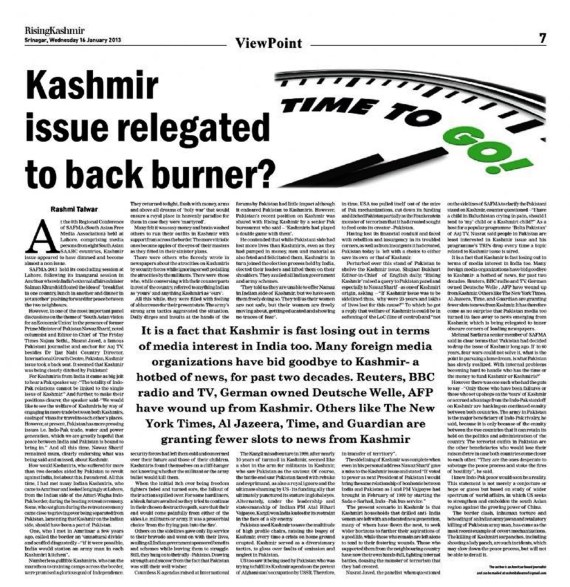
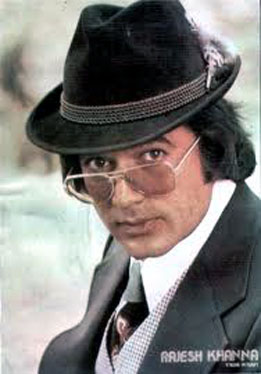

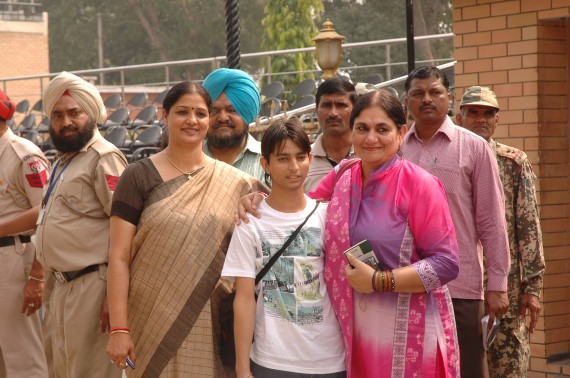










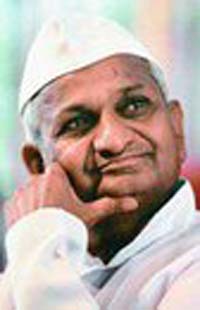


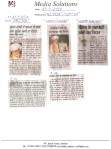
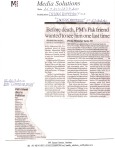




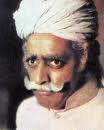













Recent Comments